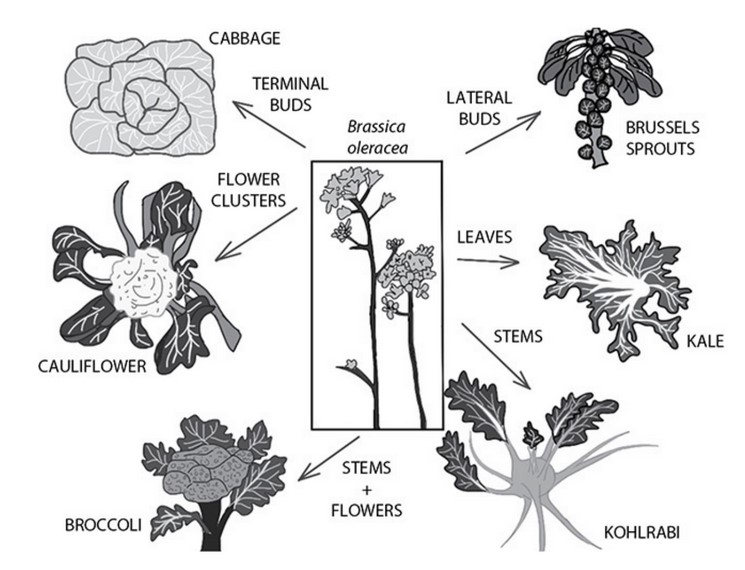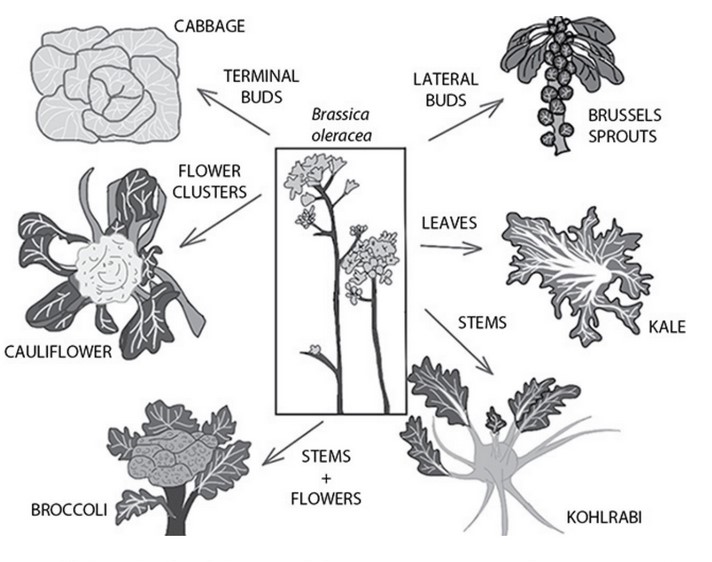Question
Cabbage, brussels sprouts, cauliflower, kale, broccoli, and kohlrabi are all
descended from a common ancestor, Brassica oleracea, the wild mustard
plant. Breeders produced these varieties by selecting variations in different
parts of the plant.
Select one of the traits and describe how artificial selection for this
trait could produce the new plant. Compare and contrast the
mechanisms and consequences of artificial and natural selection.
▶️Answer/Explanation
Ans:
Evolution requires a change in allele frequencies from one
generation to the next. The two main mechanisms by which evolution
occurs are natural selection and genetic drift. In natural selection,
phenotypes are differentially suited for their environment. In artificial
selection, humans control the reproduction of a particular group of
individuals. Differential breeding of organisms by traits allowed humans to
change hundreds of species over time.
Artificial selection is human-driven natural selection. It has been used
to produce practically all of our food crops and domesticated animals.
Artificial selection was used to produce all the varieties of dogs. Because the word breed has a wide range of interpretations, it is difficult to quantify
the number of dog breeds. However, dogs have been selectively bred by
humans for thousands of years. Over this time, hundreds of traits have been
selected for in dogs.
Natural selection is driven by the environment that selects for a
particular combination of traits that succeeds in that particular
environment. The preceding diagram shows the six traits selected for to
produce the six agricultural plants. In the case of artificial selection, the
selecting is done by the person growing the food.
In reality, there is not much of a difference between artificial and
natural selection. For example, when pollinators choose the flowers or
when animals choose the fruit they eat, they are selecting which plants get
to breed. Perhaps the major difference is the scope of the selection and the
time course over which it occurs. Because humans can essentially grow
huge plots of one crop, the change in allele frequencies between generations
can be quite dramatic. An argument could be made that natural selection
created us and our ability to learn, cooperate, and manipulate our
environment, so the specific selective pressure we place on a particular
population in order to manipulate their reproduction to serve our purposes is
still the product of natural selection. It’s quite amazing . . . The human
species is a product of natural selection that uses the mechanism of
natural selection (reproduction, heritable variation, selection) to
change other species to suit its purposes.

